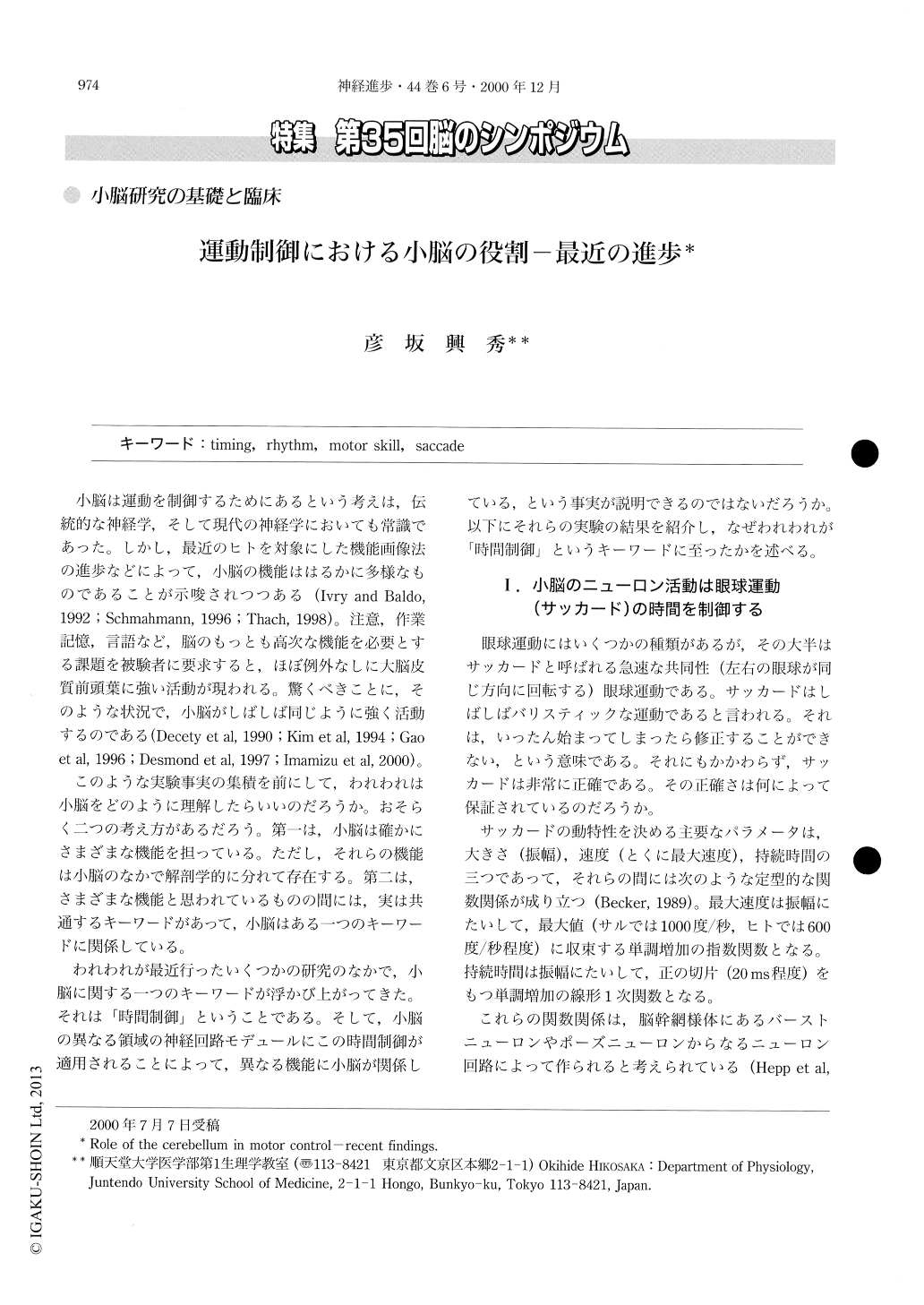Japanese
English
- 有料閲覧
- Abstract 文献概要
- 1ページ目 Look Inside
小脳は連動を制御するためにあるという考えは,伝統的な神経学,そして現代の神経学においても常識であった。しかし,最近のヒトを対象にした機能画像法の進歩などによって,小脳の機能ははるかに多様なものであることが示唆されつつある(Ivry and Baldo,1992;Schmahmann,1996;Thach,1998)。注意,作業記憶,言語など,脳のもっとも高次な機能を必要とする課題を被験者に要求すると,ほぼ例外なしに大脳皮質前頭葉に強い活動が現われる。驚くべきことに,そのような状況で,小脳がしばしば同じように強く活動するのである(Decety et al,1990;Kim et al,1994;Gaoet al,1996;Desmond et al,1997;Imamizu et al,2000)。
このような実験事実の集積を前にして,われわれは小脳をどのように理解したらいいのだろうか。おそらく二つの考え方があるだろう。第一は,小脳は確かにさまざまな機能を担っている。ただし,それらの機能は小脳のなかで解剖学的に分れて存在する。第二は,さまざまな機能と思われているものの問には,実は共通するキーワードがあって,小脳はある一つのキーワードに関係している。
Based on recent human and animal studies, I propose that the cerebellum controls the timing of neural events that are prerequisite for motor control and possibly cognitive functions. Evidence is presented as the results of different experiments from our laboratory. First, a group of neurons in the monkey cerebellum (close to the dentate nucleus) uniquely encoded the duration of saccadic eye movement, not its amplitude or velocity.

Copyright © 2000, Igaku-Shoin Ltd. All rights reserved.


